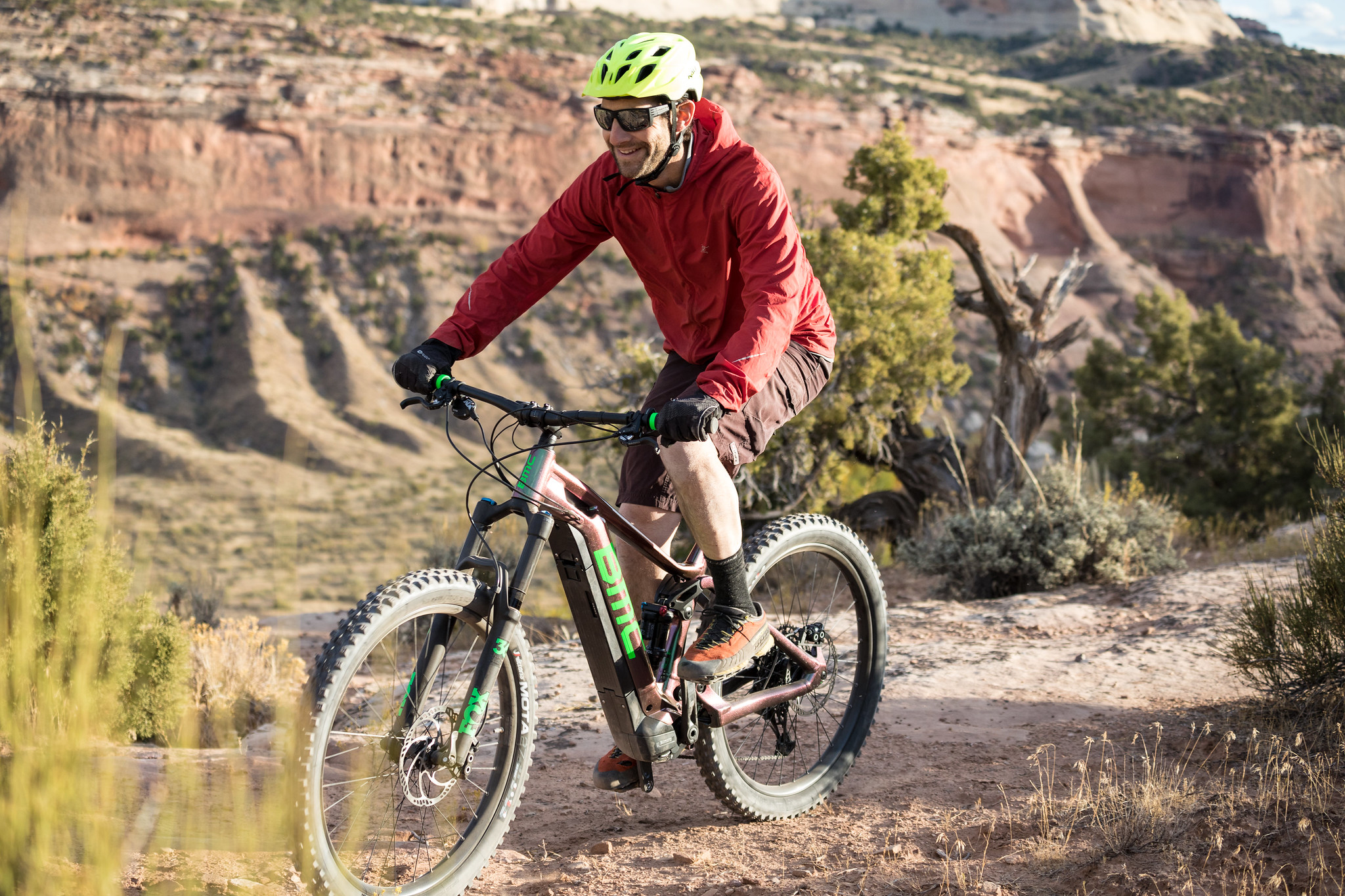By Charles Pekow — Electric mountain bikes don’t seem to affect terrain or wildlife much more than conventional mountain bikes. But more research is needed on the topic, concludes the first study of eBikes on federal lands. The U.S. Department of Transportation reported on the issue following a 2019 order by the Interior Department to develop policies to allow eBikes in lands operated by the Bureau of Land Management, National Park Service, Fish and Wildlife Service, and Bureau of Reclamation.

The report also states that the nation needs to conduct more research into possible effects of eBikes on cultural and historical facilities. On the plus side, it says riding eBikes in public lands can reduce use of autos and thus cut emissions. It suggests adding charging stations. Injury levels are about the same between users of both types of bikes, but eBike users tend to be older and suffer more head trauma.
See The Future of E-Bikes on Public Lands: How to Effectively Manage a Growing Trend: Final Report at https://highways.dot.gov/sites/fhwa.dot.gov/files/wfl-e-bike-final-report.pdf









What nonsense! Obviously, an e-bike gives one a much longer range, increasing the human footprint in wildlife habitat and making that much more habitat unusable by the animals that live there!
These studies are helpful, even though e-bike haters will automatically ignore anything but their own anger. Which is very unfortunate, because as the article states, e-bikes “can reduce use of autos and thus cut emissions.” There are excellent reasons many states are offering rebates – in urban areas, every trip on an e-bike is a trip not taken in a car. It’s bizarre how getting into a 4,000 pound car and using millions of tiny explosions of gasoline to go get a beer is considered totally normal, while an enjoyable pedal on an e-bike to accomplish the same goal can be controversial.
E-bikes on dirt trails however, is different, and a legitimate question. (And btw, my range on my e-bike is far, far less than on any of my other bikes).
A big problem and never mentioned, is the terrible naming system someone mistakenly invented. Class l and Class ll are often allowed off-road, because their power assist cuts off at 20mph, while Class lll ebikes are usually banned because they cut-out at 28mph. But “Class ll” is totally different – they have a throttle and do not need to be pedaled – they essentially are low-power motor scooters. People justifiably dislike kids zooming around on these little scooters. These little scooters should never have been grouped together with the pedaled e-bikes, and are creating a lot of pushback.
As an older mountain biker, I have recently purchased an e-bike to continue my mountain biking. I’m currently transitioning to part-time regular mountain bike and part-time e-bike. I don’t see any problem riding my class I bike on any trails. It’s great that older bikers can continue on their favorite trail. I am not happy that there are currently trails I can’t ride on my e-bike. I’m not seeing the logic in this exclusion. Public lands should be public. I have more of an issue with horses and mountain bikes screwing up trails after a rain.
This issue reminds me of skier’s not liking snowboarders on “their” resort. BUT, ski resorts are privately owned and can make their own rules.
On the off chance that some bureaucrat in a position to enact regulation might read this … Comparing car trips with replaced bike trips is like comparing apples to French fries. If you are riding an ebike to replace your car trip around Arches NP for example, that is on roads and any ebike is allowed, as are motorcycles, etc. eMTB are usually ridden on trails where cars cannot go, so that is really not replacing a car trip. People (hikers, families, horses, etc) don’t like careless, young whipper-snappers zipping along the mixed use trails on class II ebikes (I think we all agree this is unsafe), and many think it is annoying, but the real problem is that the classifications are not clear enough, and some people (Moto-heads) think that their (electric?) motor-bike is some kind of an eMTB. The rules and classifications need to be very clear and society in general needs to understand and accept the differences between the various 2-wheeled ‘contraptions’ and follow the rules. Americans have a difficult time following rules, like a previous poster said ‘Public lands should be public’ – why can’t I do what I want there???? That sentiment does not take into account the various uses & users of different areas of public land. Do we want motorcycles/ATVs sharing the trails with families with young children??? Do horse riders want to share trails with motorcycles/ATVs??? The best solution includes better social understanding & empathy for all trail users, AND more trails, specifically more user-specific trails.
And, for the public lands bureaucrat who might be in a position to make trails for us … eMTB CAN get around more easily than a regular MTB, but that doesn’t mean that giving (e)MTB access to old logging, 4×4 roads, & moto-trails is helpful. Elevation grades and surface conditions are important to bike riders. The public lands agencies could start by just inventorying existing roads and trails, and identifying ones have reasonable grades and surface conditions for MTB/eMTB. You could start by adding reasonable routes to tools like TrailForks or MTBProject. Then you could probably get usage statistics and decide from there where new trails would be beneficial.
Comments are closed.